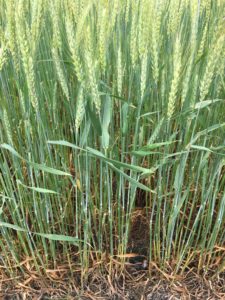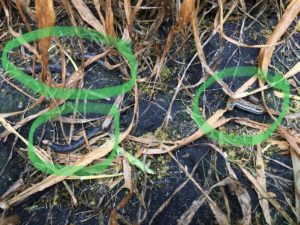True Armyworm in Northeastern NC Wheat- Time to Scout
go.ncsu.edu/readext?602921
en Español / em Português
El inglés es el idioma de control de esta página. En la medida en que haya algún conflicto entre la traducción al inglés y la traducción, el inglés prevalece.
Al hacer clic en el enlace de traducción se activa un servicio de traducción gratuito para convertir la página al español. Al igual que con cualquier traducción por Internet, la conversión no es sensible al contexto y puede que no traduzca el texto en su significado original. NC State Extension no garantiza la exactitud del texto traducido. Por favor, tenga en cuenta que algunas aplicaciones y/o servicios pueden no funcionar como se espera cuando se traducen.
Português
Inglês é o idioma de controle desta página. Na medida que haja algum conflito entre o texto original em Inglês e a tradução, o Inglês prevalece.
Ao clicar no link de tradução, um serviço gratuito de tradução será ativado para converter a página para o Português. Como em qualquer tradução pela internet, a conversão não é sensivel ao contexto e pode não ocorrer a tradução para o significado orginal. O serviço de Extensão da Carolina do Norte (NC State Extension) não garante a exatidão do texto traduzido. Por favor, observe que algumas funções ou serviços podem não funcionar como esperado após a tradução.
English
English is the controlling language of this page. To the extent there is any conflict between the English text and the translation, English controls.
Clicking on the translation link activates a free translation service to convert the page to Spanish. As with any Internet translation, the conversion is not context-sensitive and may not translate the text to its original meaning. NC State Extension does not guarantee the accuracy of the translated text. Please note that some applications and/or services may not function as expected when translated.
Collapse ▲Article by Dominic Reisig and Angela Post
Like 2018, true armyworm has been spotted in northeastern North Carolina wheat over the past two weeks. This infestation does not appear to be as widespread as last year, but growers should scout since infestations will be spotty.
Larvae are difficult to find and often feed at night. Look for injury on the lower leaves resembling irregular chewing, resulting in defoliation. Bird activity around fields can also be a sign that armyworm larvae are present. Visit several parts of the field and move litter, searching for larvae.
The threshold is six larvae (1/2” or larger) in two square feet. Note that wheat yield losses are highest when feeding occurs during the boot and flowering stages. During milk, potential impacts on yield drop, but can still be significant. For example, if the flag leaf is removed during mid-milk, the potential yield loss is around 10-15%. When the grain is near maturity, double the threshold.
Keep in mind that large larvae eat more than small larvae. They consume most material as a larvae during the last few days of their life. Also, when infestations are heavy, they will begin feeding on the awns of bearded varieties, then the grain and can clip heads, especially when most of the foliage is consumed. Be sure that insecticide coverage is adequate. Larvae that are hiding beneath litter will be more difficult to kill. Pyrethroids work well for management, but most have a 30-day pre-harvest interval restriction. Mustang Maxx is one that has only a 14-day pre-harvest interval restriction and can be applied at 2.8 to 4 oz/A for armyworm control. Follow all label instructions.




